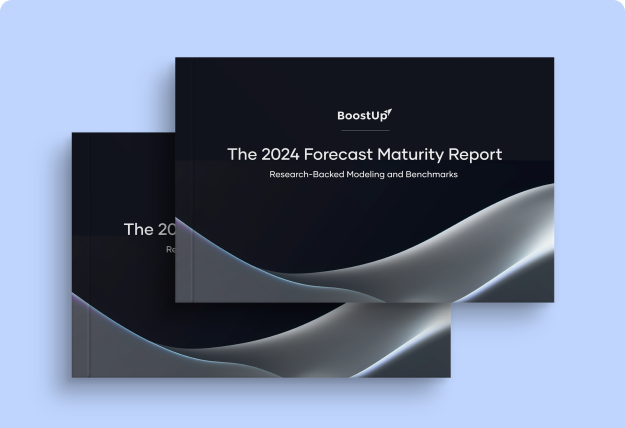The Revenue Blog /
Make more accurate forecasts with these four tips
Make more accurate forecasts with these four tips

Topics covered in this article
As we wade our way through these uncertain economic times, budgets are reduced, scrutiny is increased, and pressure grows.
Every deal and every dollar of revenue earned becomes more and more important.
That is why it is absolutely crucial that your forecast is as accurate as possible. As a sales or revenue leader, it’s your job to make sure the money is where you said it would be.
How can you ensure you make your most accurate forecasts ever?
We talked to revenue leaders and this was their advice…
- Build a tight partnership with your enablement team
- Get the proper process, people, and platforms
- Change will happen, handle it well
- Ensure you have a bulletproof process
Build a tight partnership with your sales enablement team
Imran Musaev, VP of Revenue Operations at Mindtickle recommends those seeking to drive predictability build a bridge to sales enablement.
To get the data required for accurate forecasts, you must go straight to the source. Sales enablement gives RevOps the ability to get the best data possible.
Therefore, a strong relationship with sales enablement allows RevOps to get the tools, platforms, and processes required for consistent and correct sales data
How Can This Relationship Result in a Higher Close Rate?
Working together, RevOps can highlight make-or-break deals for enablement, who can provide the resources, materials, and coaching required to successfully close them. Then, RevOps can see the results of the coaching and enablement efforts within the data captured by enablement.
The RevOps and enablement relationship becomes a mutually beneficial, cohesive loop of surfacing important deals, providing support, capturing the result, and then improving.
Get the right process, people, and platforms
Your forecasting process is everything, and you need the right people and platforms to power it.
When it comes to forecasting, Navin Persuad, VP of Revenue Operations at 1password applies his version of the Three P’s as such:
- An efficient, scalable, and repeatable processes
- Guide and enable people to understand and use the processes
- Leverage a unified platform to accelerate business insight.
Your sales forecasting process should be founded upon a defined and repeatable process that everyone involved can easily carry out. The people involved should understand exactly what it is so they know what exactly goes into the forecast and how that impacts it.
Navin says that one of the most crucial components of an accurate revenue and sales forecast is an innate understanding of your business. You must know how the sales teams, individual sellers, seasonality, product usage, etc. all impact the predictions you make and the probability of them coming true.
Handle change well
We’ve all seen it… layoffs, adjustments to business strategies, product shifts, revenue model changes, and so on.
It’s hard to maintain an accurate sales or revenue forecast when you lose all predictability. So when changes are made, they must be handled properly.
That’s why Roman Gruhn (VP, Sales Operations & Technology at MongoDB) says not to underestimate the time, effort, and resources required to make changes, as sellers and their managers have many other responsibilities they would rather pay attention to.
Separate Enablement Programs to Aid Understanding
Roman suggests you invest in separate enablement programs for each level of the organization, from the individual contributor, up to the senior executives. These should explain to them why the changes are needed, and how they will benefit from it on a personal level.
You should show them why they should go through the hassle of changing what they do and learning something new.
Build a bulletproof process
In the end, great processes lead to great forecasts. But, it goes beyond just your forecasting process. As BoostUp's own Lucas Lamb says, to create truly accurate, consistent, and predictable forecasts, you need to build a process that spans sales, RevOps, and enablement. Your forecasting process should be part of the sales process, and so on.
Not only does that ensure that your data is correct, but there is buy-in and involvement from every team.




-Photoroom.png)